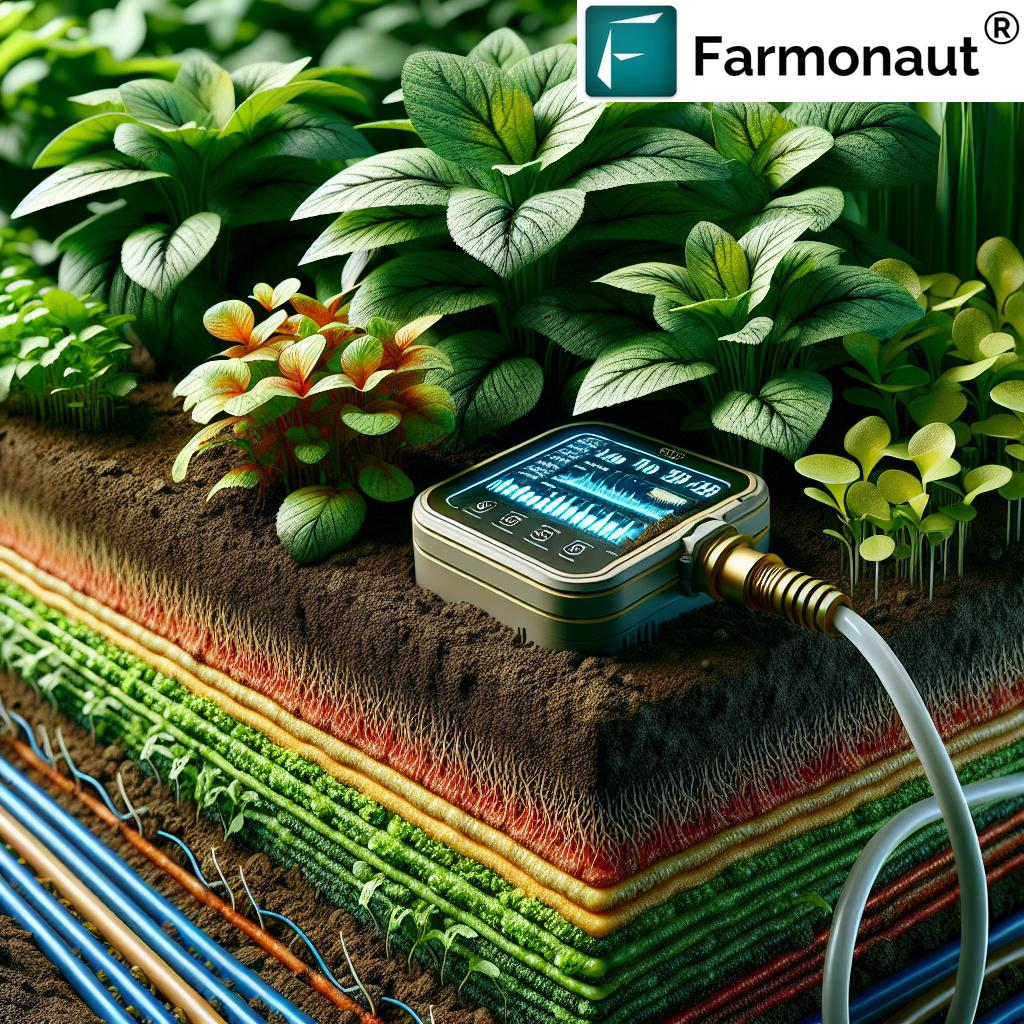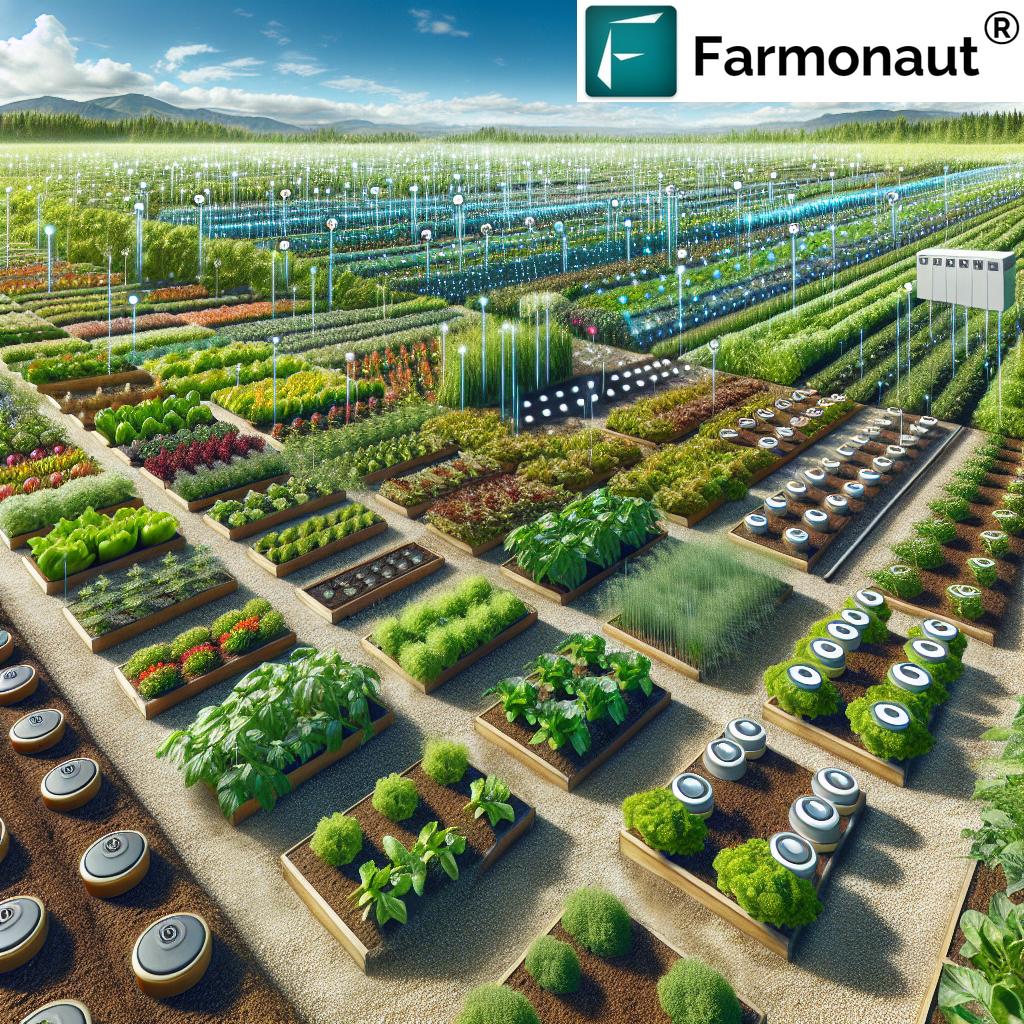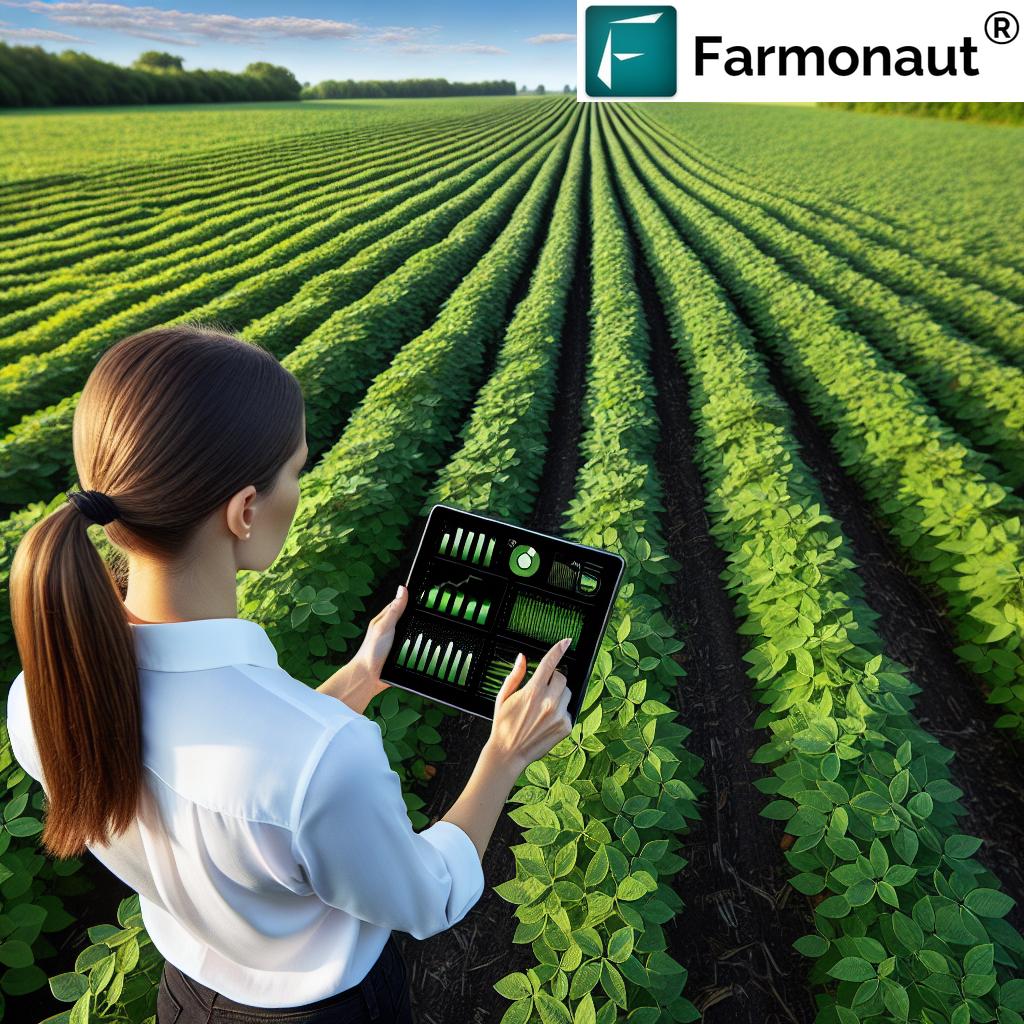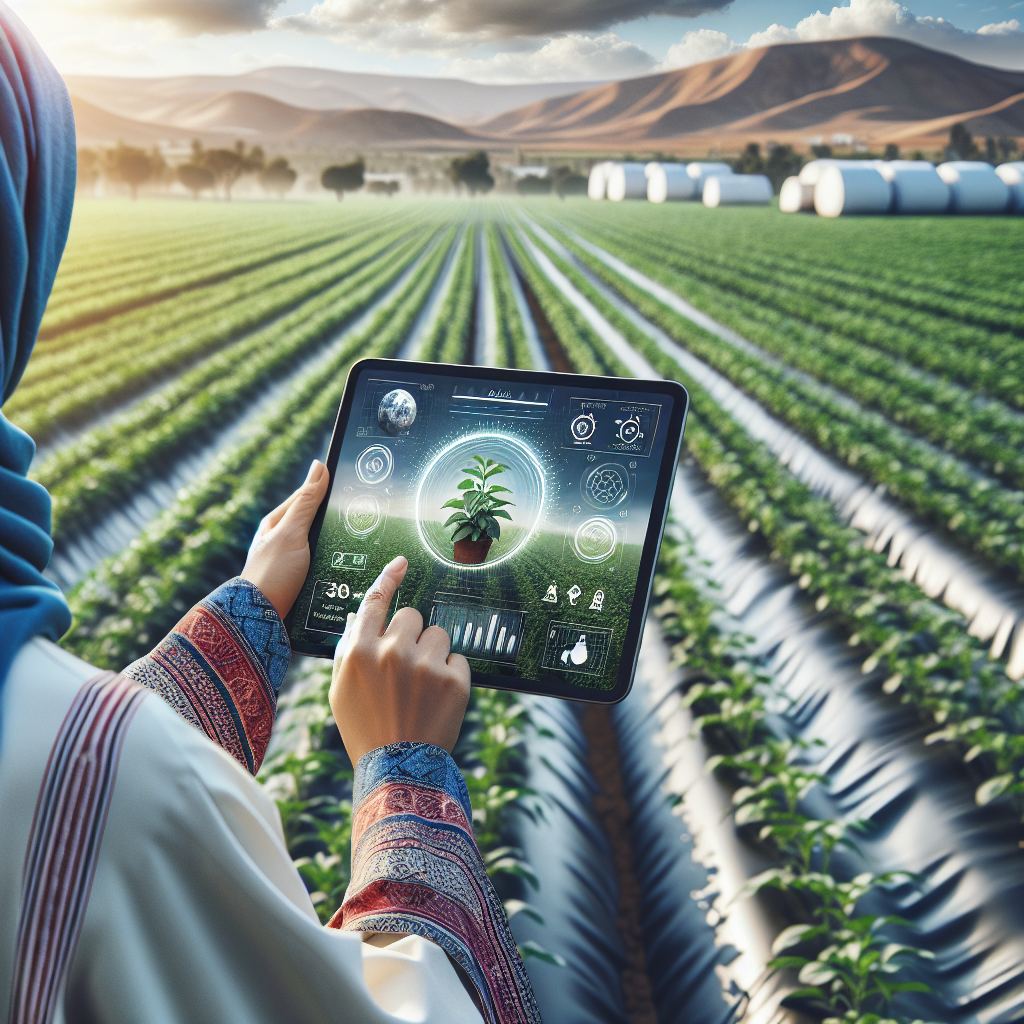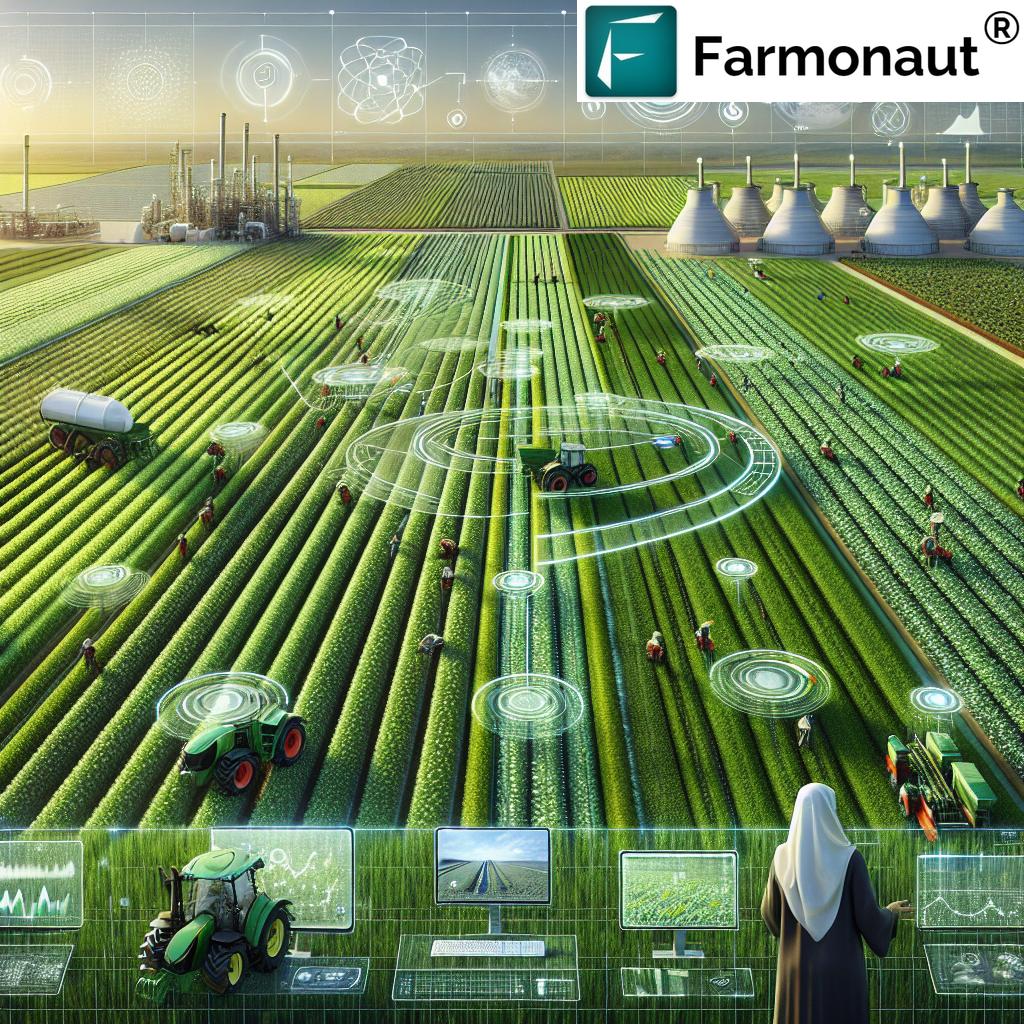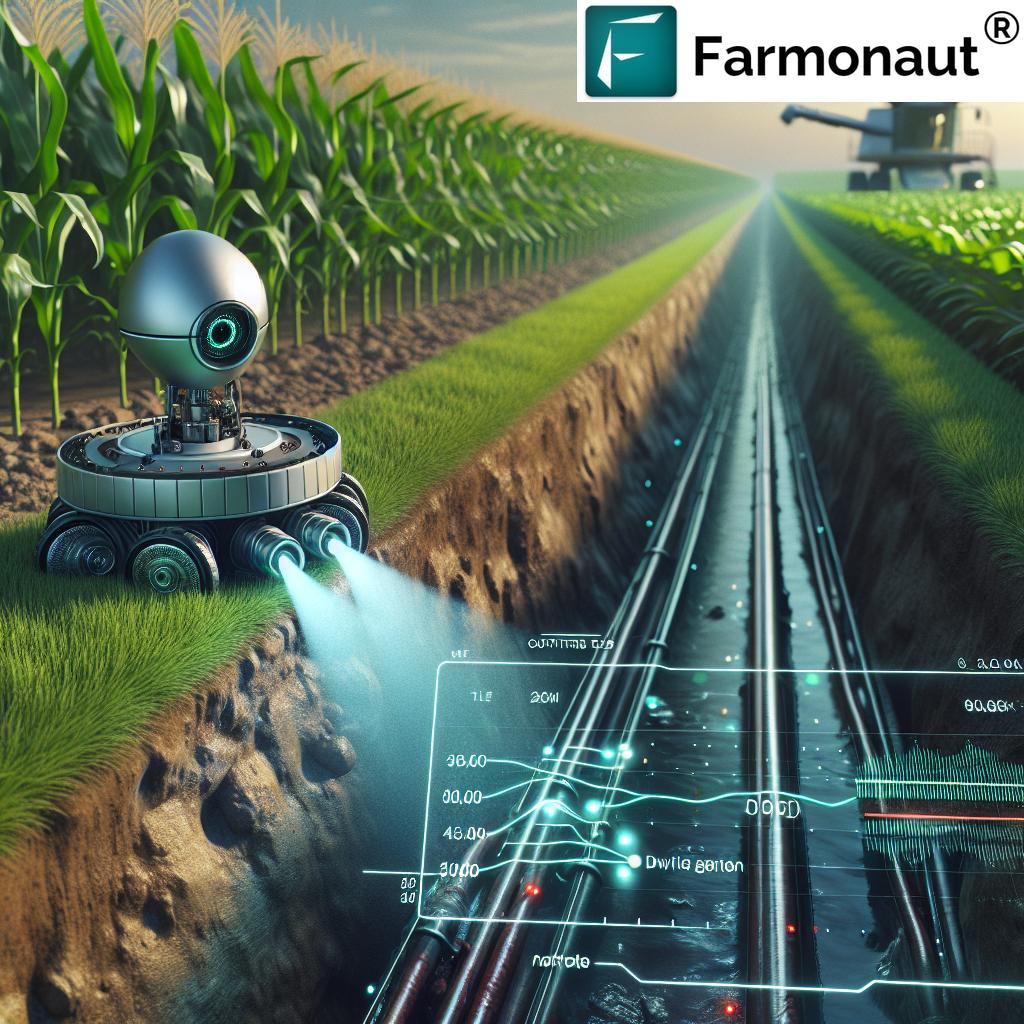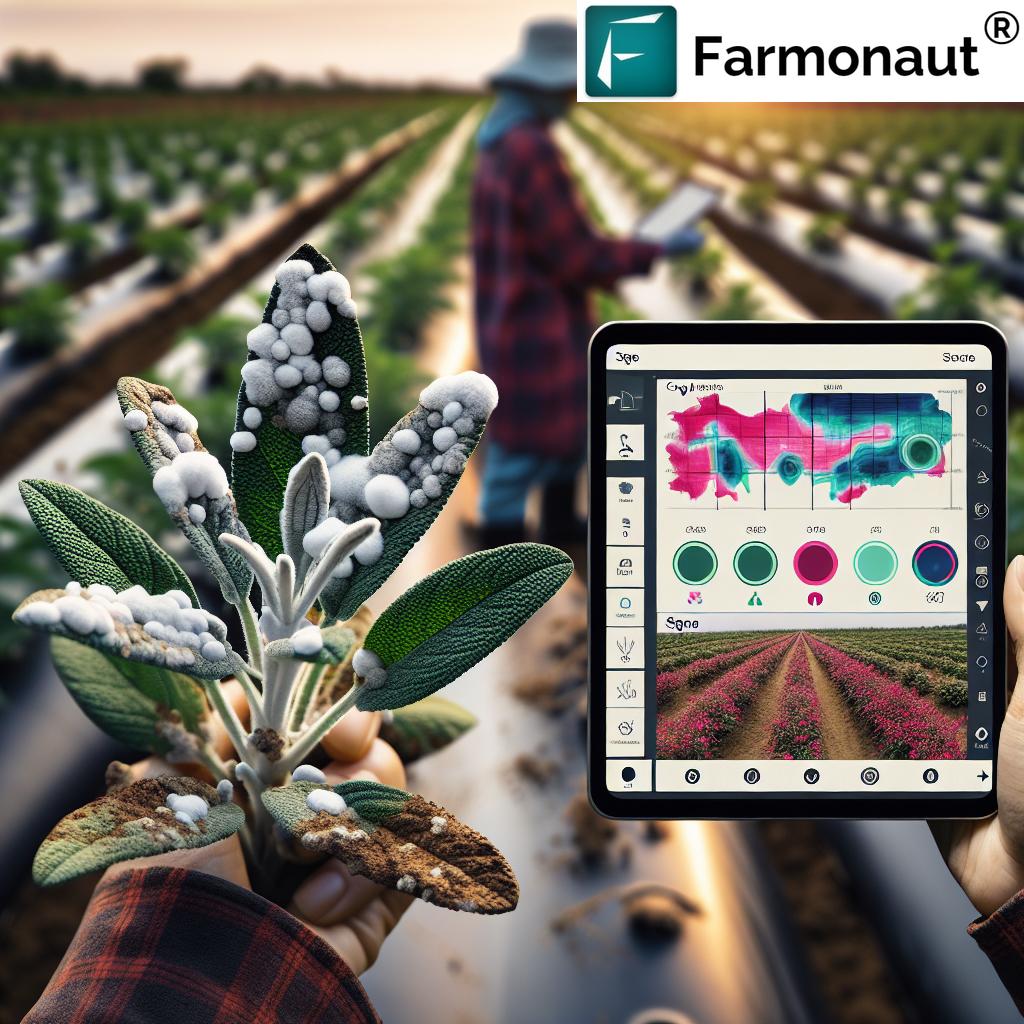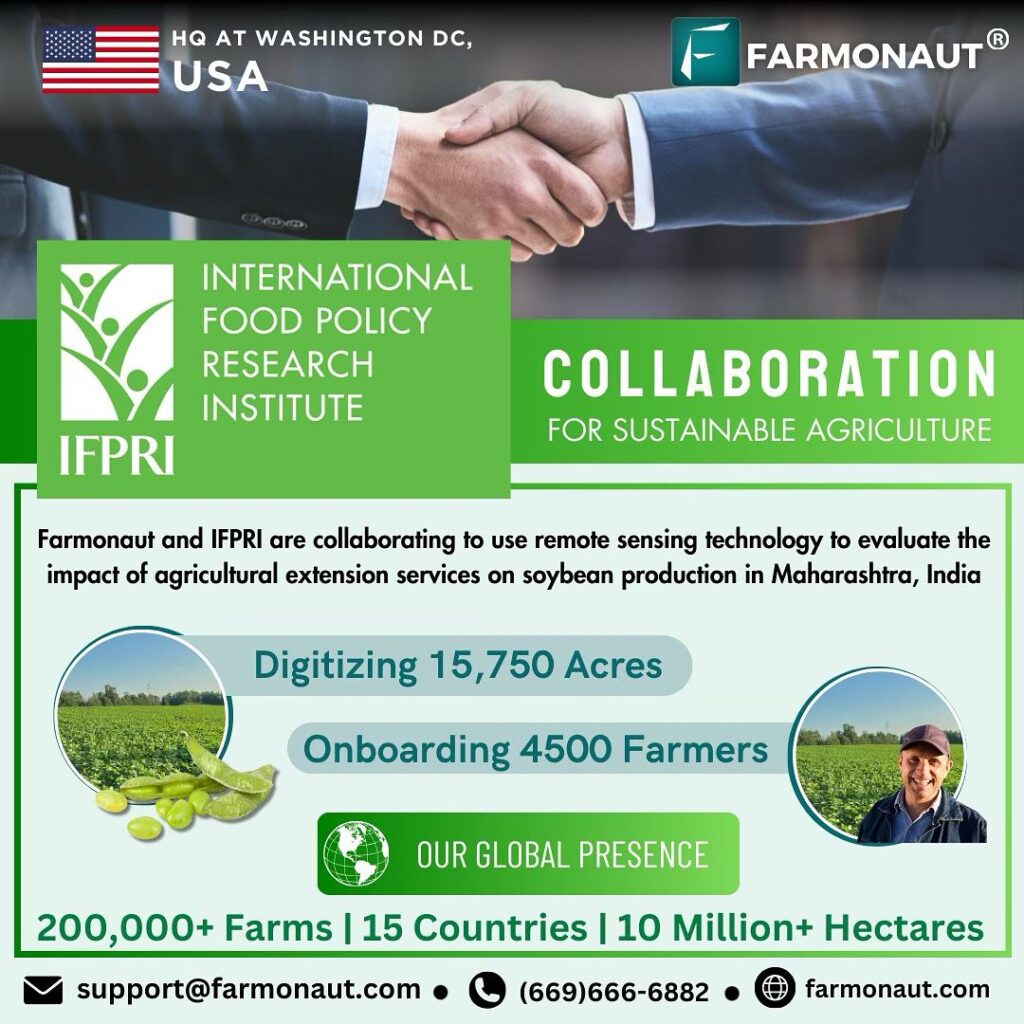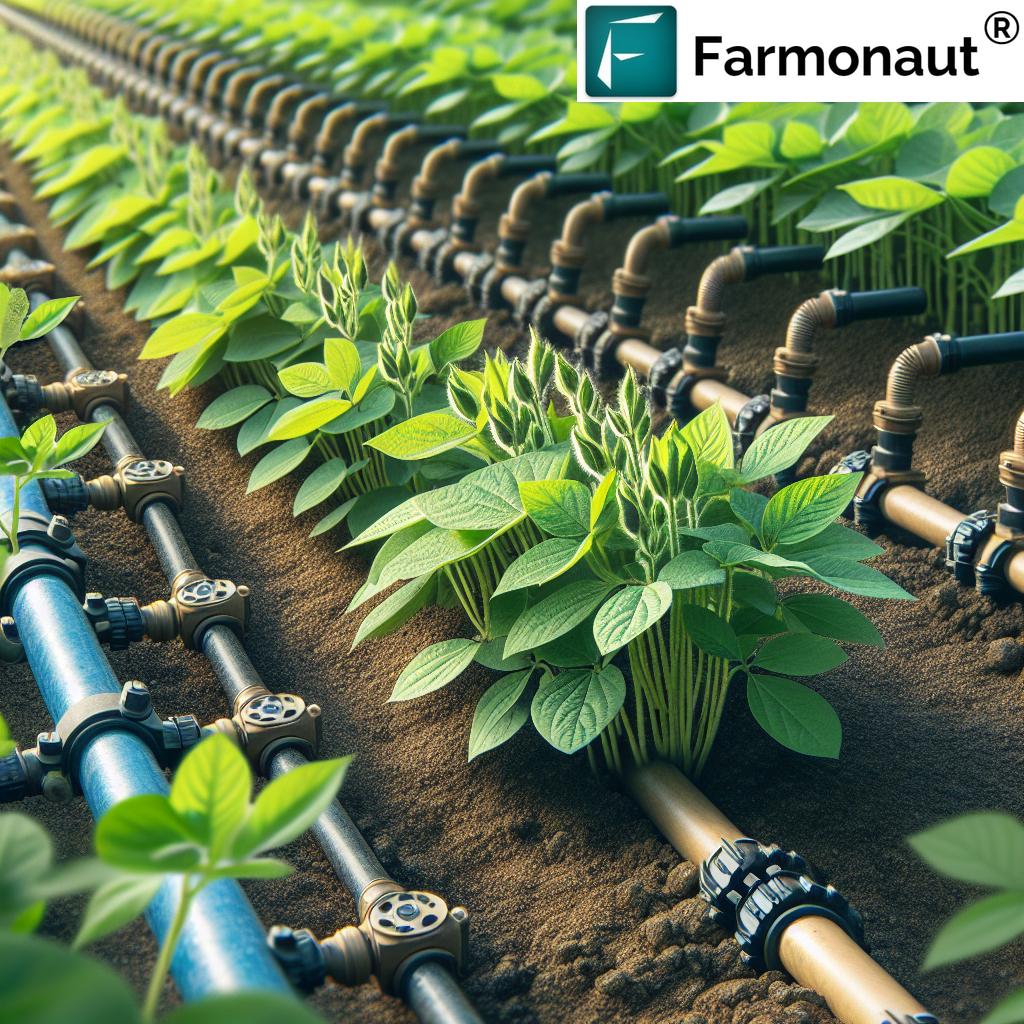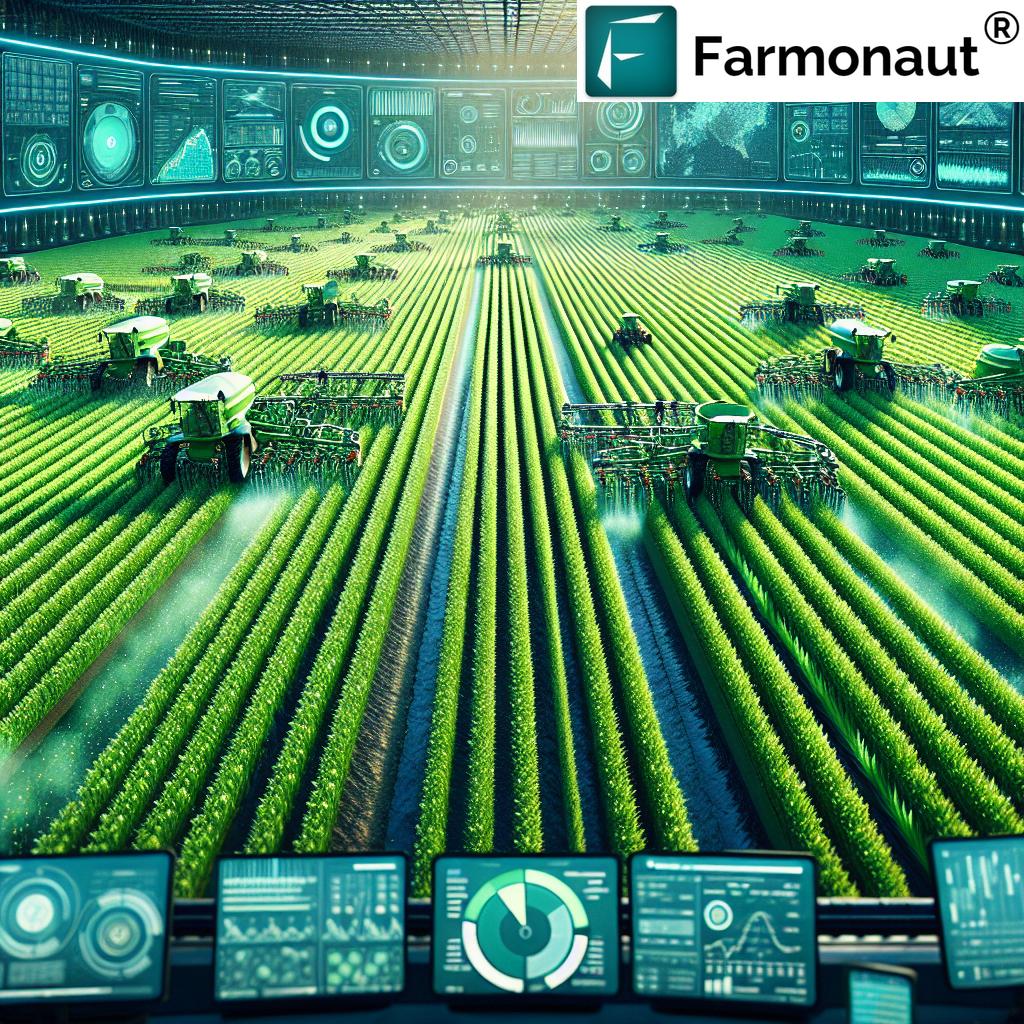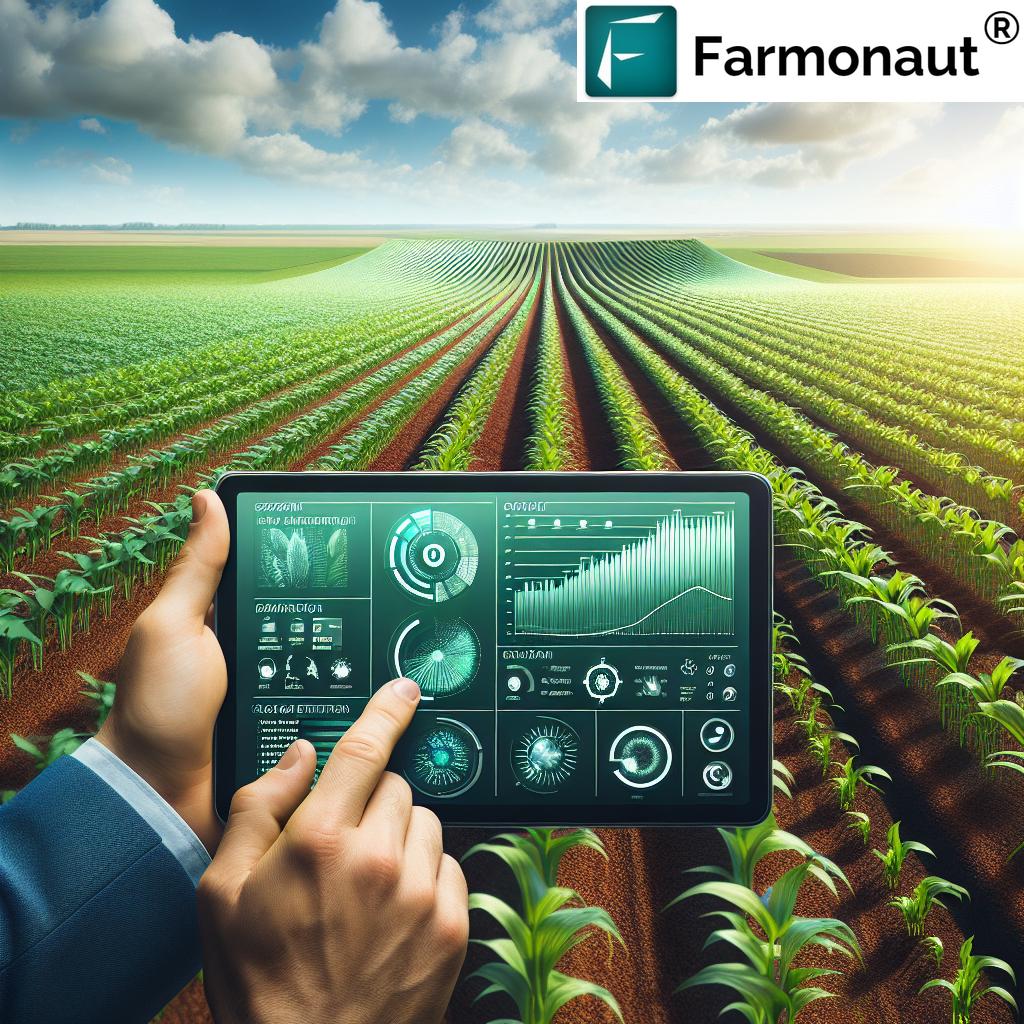Table of Contents
- Introduction
- Understanding Garden Moisture Sensors
- 7 Powerful Ways Garden Moisture Sensors Boost Crop Yields
- Integrating Sensors with Farm Management Systems: Farmonaut’s Edge
- Choosing & Installing Garden Moisture Sensors
- Challenges, Solutions & The Future of Soil Water Content Monitoring
- Impact of Soil Moisture Sensor Adoption on Key Crop Yield and Water Use Metrics
- FAQs about Garden Moisture Sensor Technology
- Conclusion
- Farmonaut Subscription Plans
“Soil moisture sensors can increase crop yields by up to 20% through precise irrigation management.”
Garden Moisture Sensor: 7 Powerful Ways to Boost Crop Yields
In the ever-evolving world of agriculture, the role of technology in advancing sustainable farming practices cannot be overstated. Today, we face unprecedented challenges: escalating water scarcity, unpredictable weather patterns, fluctuating input costs, and the pressing need to maximize crop yield while minimizing environmental impact. As farmers and horticulturists, we know that water management is at the heart of overcoming these challenges. Enter the game-changer: soil moisture sensors, the precise, real-time devices that are revolutionizing how we monitor, manage, and optimize water usage, leading to robust plant health and higher yields.
Garden moisture sensors, often paired with precision irrigation management systems, empower us—the cultivators of the land—to make data-driven, informed decisions. By enabling accurate soil water content monitoring, these sensors give profound insights into the moisture availability within our soil, facilitating irrigation that’s neither wasteful nor insufficient. The impact? Dramatic improvement in crop health, nutrient management, and overall resource conservation.
In this comprehensive guide, we delve deep into how soil moisture sensors and precision agriculture technology can transform your farm or garden. Drawing from data-backed insights, technical explanations, and the integration advantages of intelligence platforms like Farmonaut, we unmask the 7 most powerful ways these sensors can drive substantial gains in yields and sustainability.
Understanding Garden Moisture Sensors: Principles and Science
At the core of precision agriculture technology is the ability to monitor soil moisture levels accurately—to know, beyond guesswork, how much water is truly available for plant roots. Let’s unravel the science behind these pivotal devices and grasp how they underpin sustainable farming practices.
What are Garden Moisture Sensors?
Garden moisture sensors are highly sensitive tools, explicitly designed to measure volumetric water content in soil. These sensors offer constant, real-time insights, enabling us to facilitate optimal irrigation and resource allocation. By accurately tracking soil hydration, we’re empowered to make precise, timely decisions that foster plant vitality, combat root stress, and maintain the delicate balance needed for thriving crops.
How Do These Sensors Work? Core Principles Explained
- Capacitance Sensors: These operate by assessing the dielectric constant of the soil. As moisture content increases, so does the dielectric constant, resulting in a higher capacitance reading.
- Time Domain Reflectometry (TDR): TDR sensors pass an electrical signal through probes inserted in the soil. The time it takes for the signal to reflect back is influenced by soil moisture—faster in drier, slower in wetter conditions.
- Frequency Domain Reflectometry (FDR): FDR devices emit electromagnetic waves and measure the reflection time, which varies to indicate the water content in the rooting zone.
Each technology harnesses the electrical property differences introduced by water’s impact on the soil, providing us with a non-destructive, real-time measurement of soil hydration.
Types of Garden Moisture Sensor Devices
- Handheld Probes for spot checks during field walks
- In-ground Sensors for continuous monitoring and integration with automated irrigation solutions
- Wireless Sensor Networks connected to irrigation management systems, collecting granular field data remotely
Key Metrics Measured:
- Volumetric water content (%)
- Soil temperature (often paired)
- Salinity/EC (in advanced multisensors)
Why Real-Time Soil Moisture Monitoring Makes a Difference
Traditional irrigation scheduling often relies on calendar-based routines or “feel and appearance” methods. These are inherently prone to error, leading to water wastage, uneven root zone hydration, and sometimes even plant diseases due to stress or waterlogging. By contrast, real-time soil moisture monitoring ensures irrigation is driven by accurate data, not assumptions, ensuring every drop of water counts.
“Precision irrigation systems can reduce water usage by as much as 30% while maintaining optimal plant growth.”
7 Powerful Ways Garden Moisture Sensors Boost Crop Yields
By embracing soil moisture sensor technology, we enable a level of precision agriculture and resource management that transforms our approach from reactive to proactive. Here’s how the best practices unlock crop productivity and sustainability:
-
Optimized Irrigation Scheduling
By continuously monitoring soil moisture levels, we gain precise insight into when and how much water is necessary. This prevents both under- and over-irrigation, directly conserving water resources, reducing energy costs, and eliminating the guesswork from our routines.
Example: For tomato cultivation, knowing the soil’s precise hydration can prevent blossom-end rot caused by water stress and support consistent fruit set. -
Enhanced Crop Health and Yield
Maintaining optimal moisture content within the root zone is essential to prevent stress, stunted growth, or diseases. Real-time sensor data enables us to intervene before visible symptoms appear, supporting robust plant development and yield optimization.
-
Improved Nutrient Management in Agriculture
Precise measurement of soil water content ensures fertilizers are applied when roots can absorb them efficiently, minimizing nutrient leaching. This translates into cost savings on inputs and a reduction in environmental impact by curbing runoff.
Key phrase focus: nutrient management in agriculture. -
Water Conservation and Cost Efficiency
With garden moisture sensors, we can safely adopt deficit irrigation strategies—applying water only when it’s physiologically necessary for crops. This leads to sustainable farming practices, especially critical in water-scarce regions.
-
Automated Irrigation Solutions
Integrating soil moisture sensors with automated irrigation management systems creates a seamless feedback loop.
Water delivery is automatically activated or adjusted based on real-time sensor data, reducing labor, eliminating inconsistencies, and guaranteeing that our crops never face stress due to human oversight. -
Enhanced Data Analytics & Long-Term Planning
Over a season, we can collect vast amounts of data from our fields. Analyzing moisture patterns across different zones and weather events allows us to refine future irrigation strategies for even greater efficiency and yield improvement.
-
Supporting Sustainable Farming Practices
By eliminating water wastage, reducing nutrient runoff, and supporting soil health, garden moisture sensors underpin the broader objectives of sustainable agriculture. We not only increase productivity but also contribute to the health of our land and communities.
Integrating Sensors with Farm Management Systems: Farmonaut’s Edge
An isolated soil moisture sensor is a step forward, but the future belongs to seamlessly integrated, data-driven agriculture. Farmonaut exemplifies this future by offering satellite-based crop monitoring, actionable AI advisory, and seamless integration for farmers, agribusinesses, and governments.
How Farmonaut Platforms Enhance Soil Water Content Monitoring:
- Satellite Imagery + In-field Sensor Data: Farmonaut combines real-time sensor readings with multispectral satellite data, providing a holistic, field-scale map of moisture distribution and soil health for informed management.
- Remote Monitoring from Any Device: Access critical crop and soil insights via Android, iOS, or Web app locally or for large-scale plantations globally.
- Custom AI-Powered Advisories: Jeevn AI delivers field-specific recommendations for irrigation, fertilizer timing, and resource usage.
- Resource & Fleet Management Tools: Integrate field operations, logistics, and fleet management to maximize efficiency and minimize waste.
- Traceability & Environmental Compliance: Support blockchain-enabled traceability for products (Traceability Solutions) and monitor carbon emission impact (Carbon Footprinting).
Farmonaut also provides tailored crop loan and insurance verification tools, unlocking access to financing and reducing risks for farmers using satellite-based proof of crop conditions.
The Power of Integration: Why Combine Sensors, Satellite Data & AI?
No single reading tells the full story. By integrating garden moisture sensors with satellite crop health data, we unlock nuanced insights: discerning irrigation needs, early detection of drought stress, and spatial variability across fields. This synergy ensures efficient, precise intervention—the very essence of precision agriculture.
Selecting and Installing Your Garden Moisture Sensor: Best Practices
To guarantee accurate readings and maximize the benefits of your investment, carefully consider sensor type, placement, calibration, and maintenance.
What to Consider When Choosing a Soil Moisture Sensor:
- Sensor Technology: Choose between capacitance, TDR, or FDR sensors. Match the technology to your soil type (e.g., clay vs sand), crop root depth, and required data resolution.
- Depth of Installation: Sensors should be placed within the effective root zone (often 10–60 cm depending on crop).
- Calibration: Factory calibration can be close, but site-specific calibration ensures the most accurate data. This involves correlating sensor readings to actual gravimetric soil samples for your unique conditions.
- Placement: Avoid installing sensors in atypical spots like depressions or field edges. For larger fields, use multiple devices to account for spatial variability.
- Maintenance: Regularly inspect connections, battery level (if applicable), and clean sensors to prevent fouling.
Compatible Irrigation Methods:
- Drip Irrigation: Most common in precision systems, ideal for vineyards, orchards, and vegetables.
- Sprinkler Irrigation: Integrates well with wireless, weather-adjusted sensors.
- Flood & Surface Irrigation: Moisture sensors offer powerful upgrades even here, aiding in reducing runoff.
Applying these best practices ensures your moisture sensor deployment truly supports maximum crop productivity and resource conservation.
Challenges, Solutions & The Future of Soil Water Content Monitoring
While the promise of garden moisture sensors is immense, it’s crucial to acknowledge challenges—so we can plan, adapt, and succeed.
- Initial Investment: Historically, advanced sensors were costly. Modern competition, increased production, and integration with platforms like Farmonaut are driving prices down and making precision affordable for all farm sizes.
- Calibration Complexity: Effective use demands calibration for local soils and climates. The trend towards user-friendly, pre-calibrated, or AI-aided sensors is minimizing this challenge.
- Technical Knowhow: The need for data interpretation and tech-savvy staff can be a barrier. Farmonaut and similar platforms are bridging this gap with intuitive dashboards, multilingual support, and tailored, AI-based advisories via the Jeevn AI System.
The future is bright. Expect further convergence: sensors talking to weather stations, integrating with crop models, and providing even more precise, actionable insights. As large-scale farm management platforms and APIs proliferate, no farm, garden, or plantation—regardless of its location—will be left behind in the precision revolution.
Impact of Soil Moisture Sensor Adoption on Key Crop Yield and Water Use Metrics
| Farming Method | Estimated Crop Yield Increase (%) | Estimated Water Savings (%) | Soil Health Improvement (1-5 scale) | Initial Investment (Estimated $) |
|---|---|---|---|---|
| Traditional Irrigation (Wheat) | 0 | 0 | 2 | 300-500 |
| With Moisture Sensor (Wheat) | 12-15 | 25-30 | 4 | 700-1500 |
| Traditional Irrigation (Tomatoes) | 0 | 0 | 2 | 350-600 |
| With Moisture Sensor (Tomatoes) | 16-20 | 28-32 | 4 | 800-1600 |
| Traditional Irrigation (Maize) | 0 | 0 | 2 | 400-650 |
| With Moisture Sensor (Maize) | 10-13 | 22-27 | 4 | 850-1600 |
Modern soil moisture sensors yield measurable improvements across crops, making smart irrigation essential for competitive, sustainable farming.
Frequently Asked Questions: Garden Moisture Sensors
What is a garden moisture sensor, and how does it help with crop yield optimization?
A garden moisture sensor is a device designed to measure volumetric soil water content in real time. By providing accurate, actionable data, it helps determine optimal irrigation timing and quantities, driving improvements in crop health and yield while reducing water waste.
Are soil moisture sensors suitable for all crop types?
Yes, they are used in a wide variety of crops: from horticultural gardens to broad-acre crops like wheat, maize, and vegetables. Sensor models and installation depths may be varied for best results depending on crop root depth.
How do I integrate soil moisture sensors with automated irrigation solutions?
Many advanced sensor models come with wireless connectivity, allowing them to communicate with irrigation management systems. Platforms like Farmonaut can aggregate this information with satellite monitoring for a fully integrated, automated water management solution.
What are the ongoing maintenance needs for these sensors?
Most sensors require periodic checking for cleanliness, calibration verification, battery or power checks, and ensuring that they remain buried securely at the intended depth.
Is the investment in soil moisture sensors justified for small-scale farmers?
Yes. With decreasing costs and subscription-based options from platforms like Farmonaut, the return on improved yields, saved water, and lower input costs quickly outweighs the initial investment, making it accessible for farms of all sizes.
How accurate are soil moisture sensors compared to traditional methods?
Modern capacitance, TDR, and FDR sensors, especially when correctly calibrated, offer highly accurate, real-time data that is far more reliable than manual, visual, or calendar-based approaches.
Conclusion: Shaping the Future of Precision Agriculture with Moisture Sensors
From gardens to expansive farms, the adoption of soil moisture sensors and precision irrigation management systems marks a turning point in modern agriculture. By enabling accurate, real-time soil water content monitoring and seamless data-driven decisions, we ensure optimal crop yields, efficient water conservation, and heightened sustainability. Platforms like Farmonaut elevate these gains further by blending satellite imaging, AI-powered advisories, and comprehensive farm support, allowing every grower access to the tools of tomorrow, today.
As we move forward, the integration of advanced sensor technology, data analytics, and remote management tools is no longer optional—it’s essential. By investing in and leveraging these technologies, we not only enhance our crops and profits but also protect the planet for future generations.
To experience the full power of digitally empowered, sustainable agriculture, download the Farmonaut app or integrate their API for tailored solutions—no matter where you grow.





